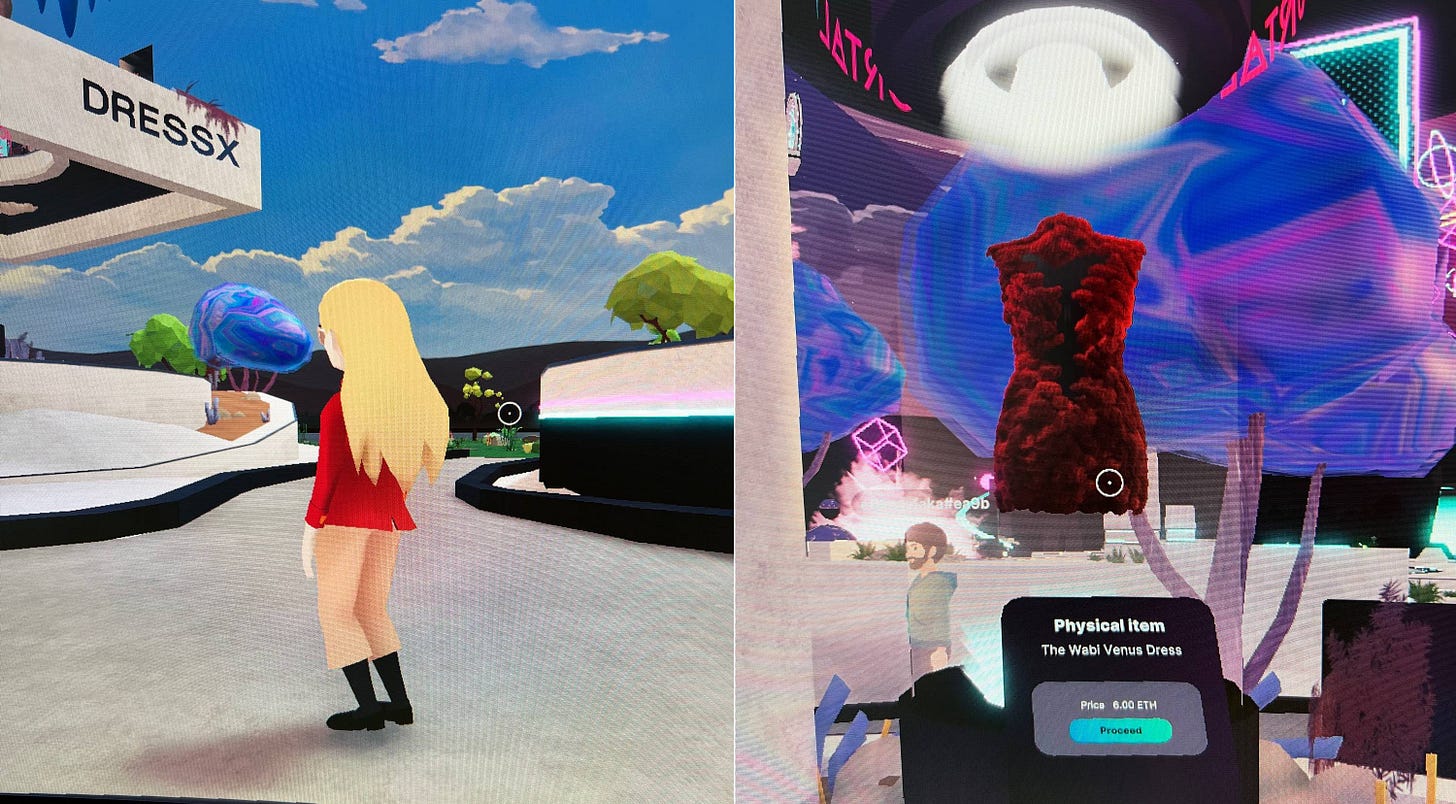As ever, there were tons of metaverse and NFT headlines this week. But one thing that struck me was that there’s little chat about making this better for consumers. What’s idealistic or cool or OG web3 is often not what’s easy to use, beautiful, or seamless.
NFT and Metaverse OGs will believe in the decentralized mechanism that powers a true metaverse. That thousands of developers and artists and engineers working together will create a functioning metaverse owned by all and by none. But as the market stands, most NFT and metaverse projects are centralized. You don’t buy NFT art peer to peer; you buy it through Opensea. As a marketer at heart, it’s hard for me to imagine it any other way. Centralized marketplaces appear because matching supply and demand is hard. Customers don’t appear out of thin air to buy your product, either IRL or in the metaverse.
You might be asking, what even is decentralized, and why do we want it? A decentralized web would take power out of the hands of a few companies, say Facebook and Google, who, through their large footprints, have a considerable say in how we access all of the information of the world wide web. To see the true value of the web, proponents say we’d remove those intermediaries, who have been at best poor custodians of our consumer data, and at worst, malevolent forces for society at large.
So back to the metaverse consumers. You may have seen Colbert’s late-night riff on Miller Lite’s metaverse activation. And, um, yup. Which consumers are clamoring to experience beer in the (centralized or decentralized) metaverse? Not rhetorical. If this is you, call me.
DressX (one of the first virtual fashion marketplaces) opened its first “store” in Decentraland. I applaud the innovation and the effort, and this is undoubtedly the foundation that future metaverse e-comm success will be built off. Those kudos being granted, this is not the watershed moment for online shopping we deserve. It’s a pain to get there. If you want to buy something, the experience isn’t the seamless delight Amazon has taught us to expect. And you can’t “touch” or try on the clothes. They also cost 4-6 ETH, about $12-20k. These Piero D’Angelo lichen-based designs come with virtual and physical versions.
(here’s me shopping!)
This week, I spoke with an art world insider who’s up to date with NFTs but not on the vanguard. Just like the rest of us mostly. And she asked, but “WHERE DO YOU HANG IT?” For some people, this answer is obvious, but for many, it’s not. Where is that Beeple bought at Christie’s for $69m? My scouring of the internet hasn’t provided a clue as to where the owners of that famous NFT keep it.
This underscores the missing consumer element in a lot of Web3 activations. The efforts one has to go through to purchase crypto, buy NFTs, experience the metaverse in a fun way, etc., are still extremely “hurdle-y.” (I’ll be copywriting that term later, obvi)
Whose responsibility is it to do the first versions that are imperfect, like DressX’s store? Certainly, start-ups in the space have to innovate like this. But for brands making these inroads, are all of these activations worth the hurdles they demand of consumers?
Another example is Discord. Every activation in Web3 must have a Discord (Discord is a chat/communications app originally popular with gamers). But Discord kind of sucks. The UX is atrocious. It’s full of trolls. And it’s one more darn app to pay attention to, too. But it’s very OG web3, and thus we persevere. So says Vogue Business this week, and they aren’t wrong. But again, I find it hard to see how additional platforms are the ideal solution for fashion and beauty consumers, particularly one that is inherently not visual, unlike, say, Instagram.
Next week I want to talk about identity and tribalism in Web3, which is also a natural counterargument to the “hurdle-y-ness.” Making it hard to get your hands on something is a way of creating scarcity and then “luxury.” These innovations make purchasing and experiencing NFTs and metaverse activations all the sweeter. How that translates to luxury experiences, that playbook is still being written.
Like what you’re seeing? Let your friends and colleagues know, too.




Hi McKenna, I learned about your background and your blog from my company's speaker event, looking forward to attending it on June 15th and hearing about your thoughts. As a side project of mine, I'm working on trying to learn, develop and evolve shopping experiences in the metaverse. Would love to learn what are your thoughts around this topic if this is also a point of interest for you. Thank you!